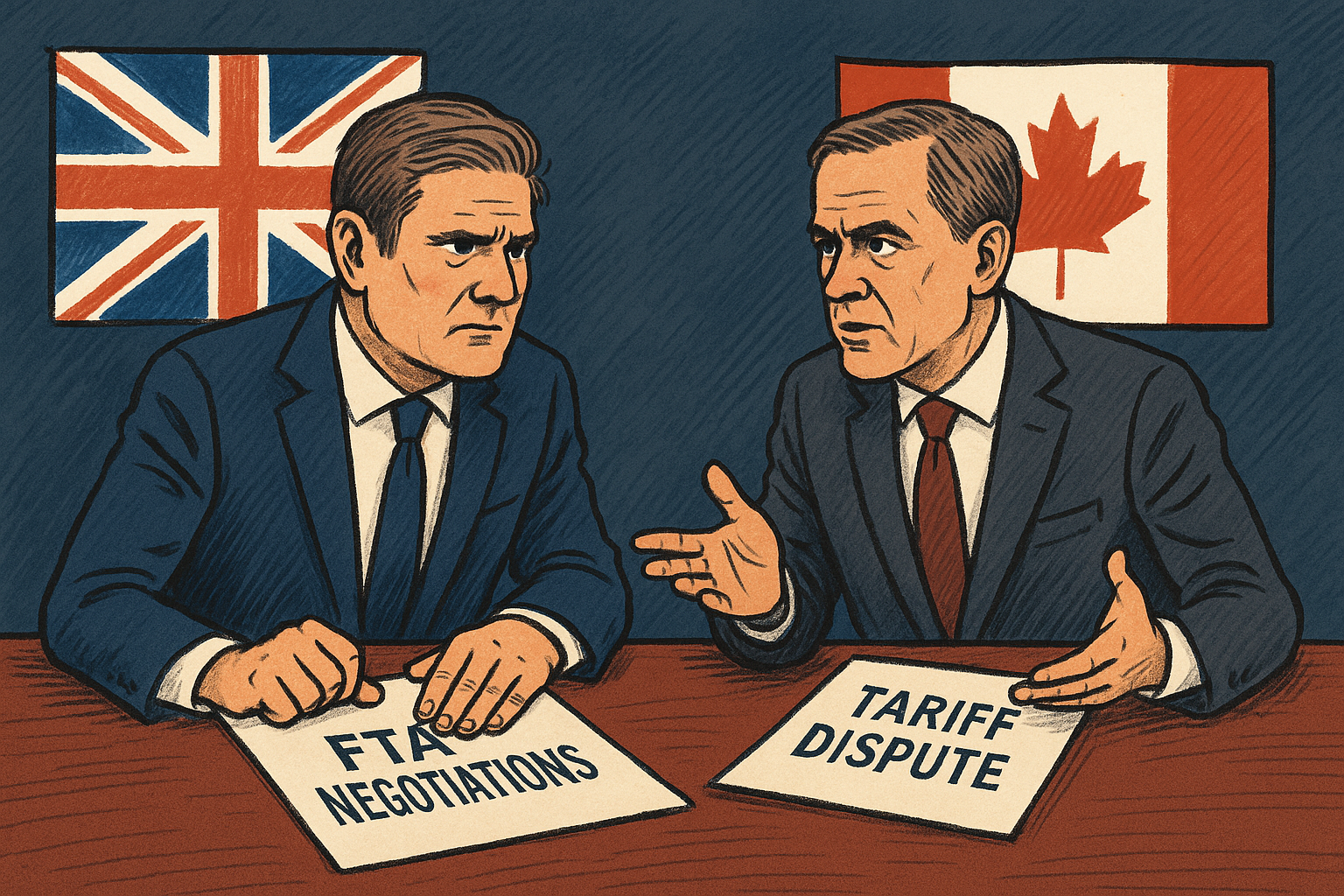As trade relationships go, the UK and Canada should be a relatively straightforward match. Both are advanced economies, members of the Commonwealth, and share similar regulatory standards and political frameworks. Yet the trade relationship between the two countries has become unexpectedly strained in recent years — and now, in the shadow of global tariff volatility and renewed political tension, it faces renewed uncertainty.
The UK currently trades with Canada under a continuity agreement rolled over from its former EU membership. This interim arrangement has helped maintain preferential market access for goods like whisky, cars, and dairy, but was never intended to be permanent. Formal negotiations to replace it with a bespoke UK–Canada free trade agreement began in 2022, only to be abruptly suspended by the UK government in January 2024.
At the core of the suspension were deep disagreements over food safety standards — particularly Canada’s interest in exporting hormone-treated beef — and regulatory divergence around dairy and agricultural quotas. Then–Trade Secretary Kemi Badenoch defended the decision as necessary to protect UK consumer standards and farming integrity. Canadian officials, by contrast, expressed frustration, warning of rising trade friction and questioning the UK’s reliability as a negotiating partner.
Since then, little official progress has been made. The UK’s Department for Business and Trade has maintained that it remains open to discussions, but no formal talks have resumed. That makes the recent phone conversation between Prime Minister Keir Starmer and Canadian Prime Minister Mark Carney — in which they reportedly discussed closer trade and commercial ties — the first visible diplomatic thaw in over a year.
But the mood music has not entirely improved. The Canadian government was reportedly unimpressed by the UK’s decision to host former US President Donald Trump during a private diplomatic visit in early May. Canadian officials have made no public statement on the matter, but behind closed doors, there is concern about what a second Trump administration might mean for UK–Canada–US trilateral dynamics — particularly if trade barriers escalate further across the Atlantic.
Meanwhile, businesses on both sides of the ocean remain in limbo. Without a modernised agreement, UK exporters to Canada face an uncertain regulatory horizon. Key sectors like automotive, spirits, and manufacturing may soon lose out on tariff preferences if no replacement is found before the continuity deal expires in late 2025. For Canadian exporters, particularly in agri-food and energy, the UK’s defensive trade posture has cooled appetite for new engagement.
Overlay this with the broader global trade picture — including Donald Trump’s threats of sweeping US tariffs and the EU’s deepening investment ties with Asia — and it’s clear that a renewed UK–Canada deal would help restore predictability in at least one strategic corridor. But with both governments focused on domestic priorities and budget constraints, negotiators may lack the bandwidth or urgency to reignite talks in earnest this year.
Still, there are opportunities. The UK’s pivot toward a green industrial strategy could open doors for Canadian battery minerals, clean energy technologies and infrastructure services. Likewise, Canada’s pension investment ecosystem — one of the most globally active — remains an untapped resource for UK infrastructure and innovation investment. In short, the commercial logic for a closer deal remains intact, even if the political will has faltered.
Bottom line for business: Unless formal trade talks resume soon, businesses exporting between the UK and Canada should prepare for a period of prolonged uncertainty. Tariff preferences may lapse, and regulatory divergence could widen. In the absence of a full agreement, sector-specific partnerships — particularly in green technology and capital investment — may be the most viable near-term route to keeping bilateral commerce resilient. Traders and investors alike should monitor policy signals closely ahead of 2026, when current rollover terms are expected to sunset.


